From the Field
Wild Bird Research Group recently wrapped up another successful MAPS (Monitoring Avian Productivity and Survivorship) season, with crews working at the Fiddler’s Creek Preserve in Titusville, New Jersey, and the North Carolina Arboretum in Asheville, North Carolina. Here are five highlights from our 2023 summer songbird banding season.
– 1 –
Numbers
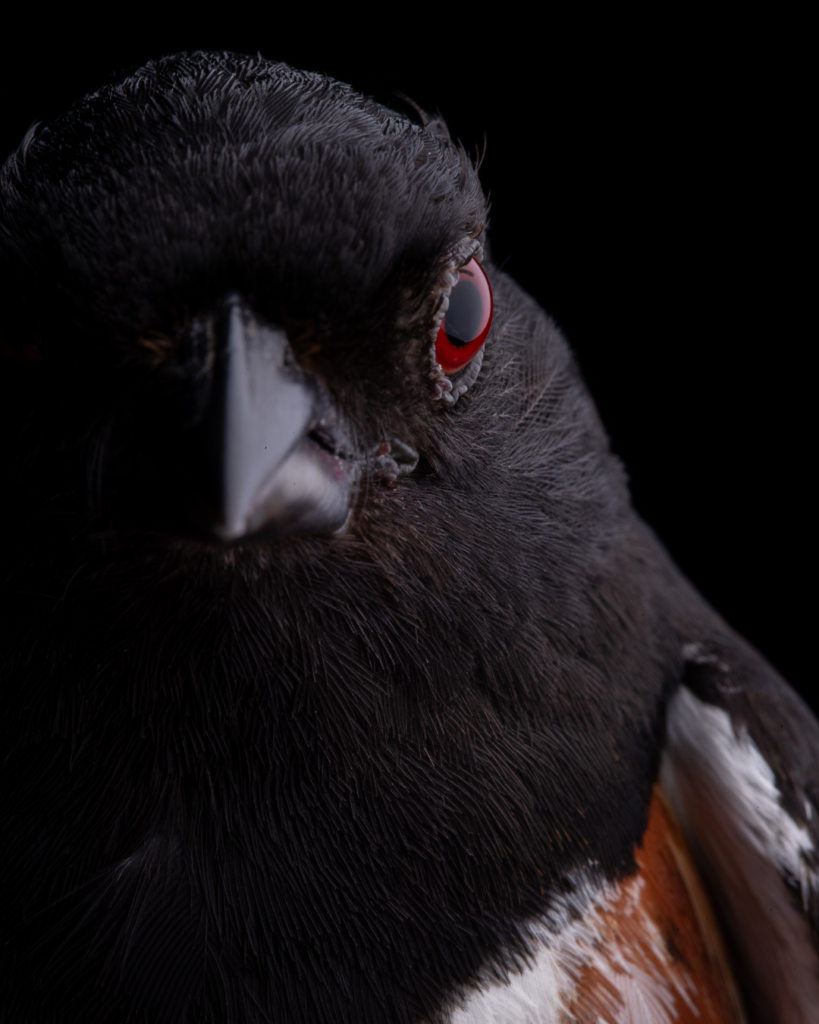
Working from the end of May to the beginning of August, our crews collectively caught 621 birds during this year’s MAPS season. Of the 155 birds captured in North Carolina, 121 were newly banded and 21 were recaptures, and an impressive 96 individuals (79.3%) of the total birds processed were migrants. The New Jersey crew banded 419 new birds and caught 47 recaps for a total of 466 individuals. Overall, it was a productive season for both stations. (Pictured: Eastern Towhee from New Jersey.)
– 2-
Hummingbirds
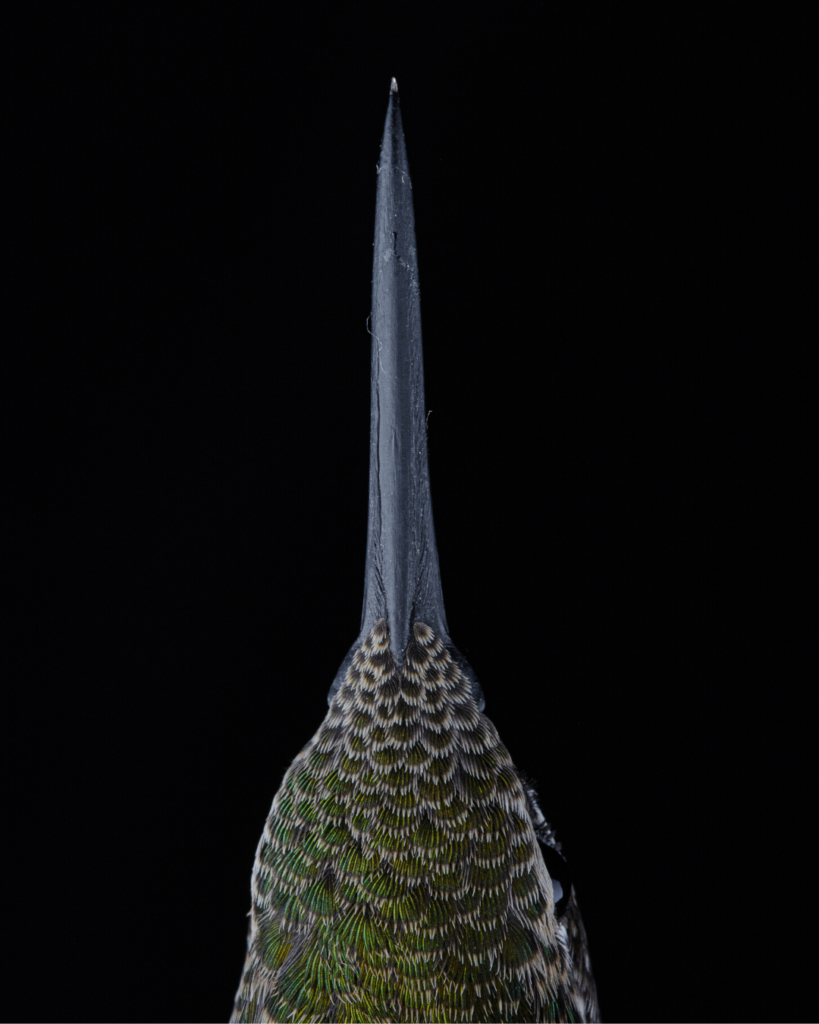
This image shows the bill of a hatch-year female Ruby-throated Hummingbird, one of three individual hummingbirds caught in North Carolina this season. If you look closely at the sides of the bill, you can see scratch marks or what we call “corrugations.” Banders use the absence or presence of these markings to help determine age, because only young birds have corrugations as the bill is growing in.
-3-
Ch-ch-changes
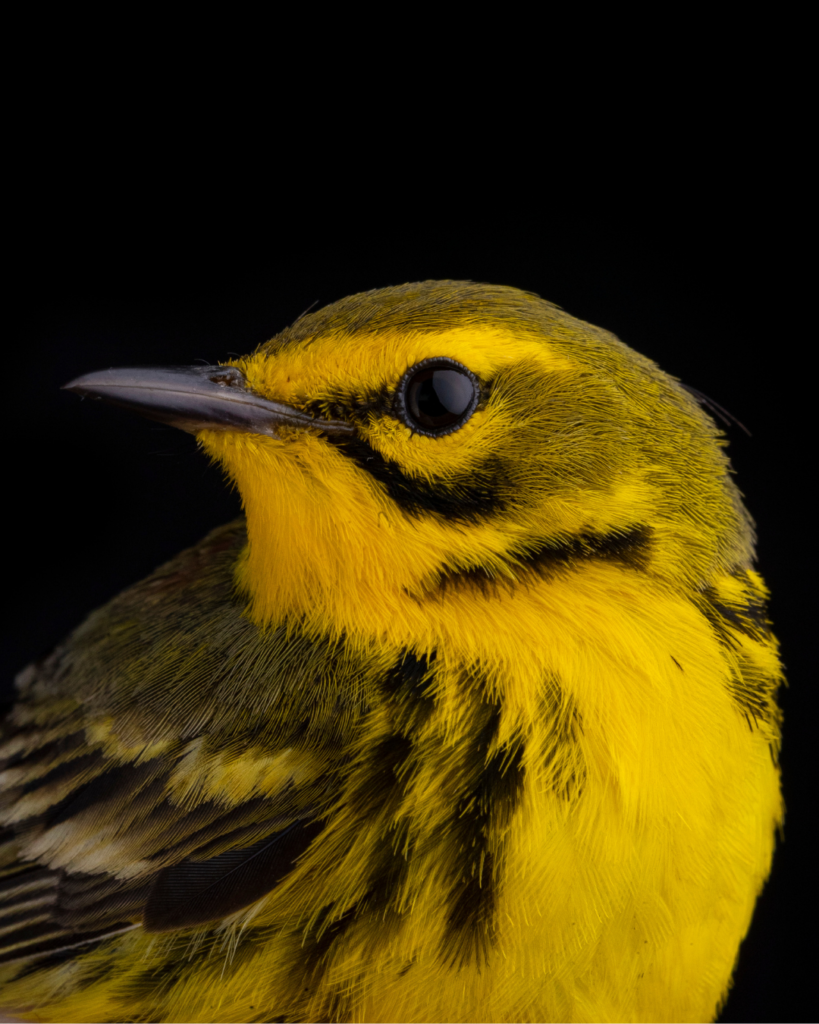
Fiddler’s Creek Preserve, where our New Jersey banding station is located, has undergone significant changes in recent years. When we first started banding here less than a decade ago, the preserve consisted of recently acquired agricultural land, but thanks to restoration and reforestation efforts, the area is now transitioning back to forest. The differences in what birds are present reflect these changes; as the habitat matures, some of our shrubland specialists will grow out of the habitat. We’ve seen a decline in Prairie Warbler (pictured) and Indigo Bunting. We’re still seeing an increase in Brown Thrasher numbers. New species for the station this season included Rose-breasted Grosbeak, Scarlet Tanager, and Worm-eating Warbler, all of which are mature-forest breeders.
-4-
Crews
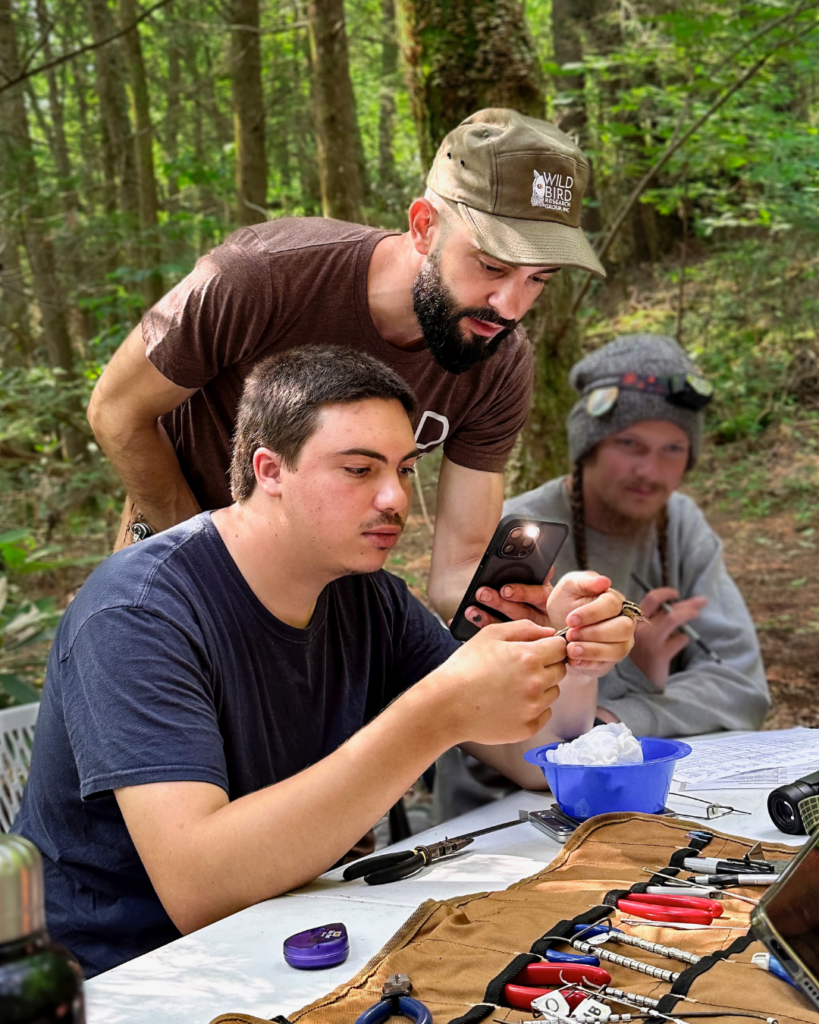
The work of Wild Bird Research Group simply could not happen without solid field crews. Our team in North Carolina this year included Kristin Anderson, Clifton Avery, Atley Elliott, Clayton Gibb, Aaron Goldfarb, Gavin Greenberg, Sarah Hill, Chris Kelly, Andrew Laughlin, Caitlin McBride, Anthony Squitieri, and Jennifer Tucker. In New Jersey we had Michelle Arias, Tiffany Bai, Samantha Bean, Kat Divine, Jack Hagan, Sean Graesser, Ian Gray, Cody Panek, Victoria Rosikiewicz, and Connor Tracey. We are immensely grateful for the time and effort of our talented technicians and volunteers that make this work possible. Thank you, team!
-5-
Finale
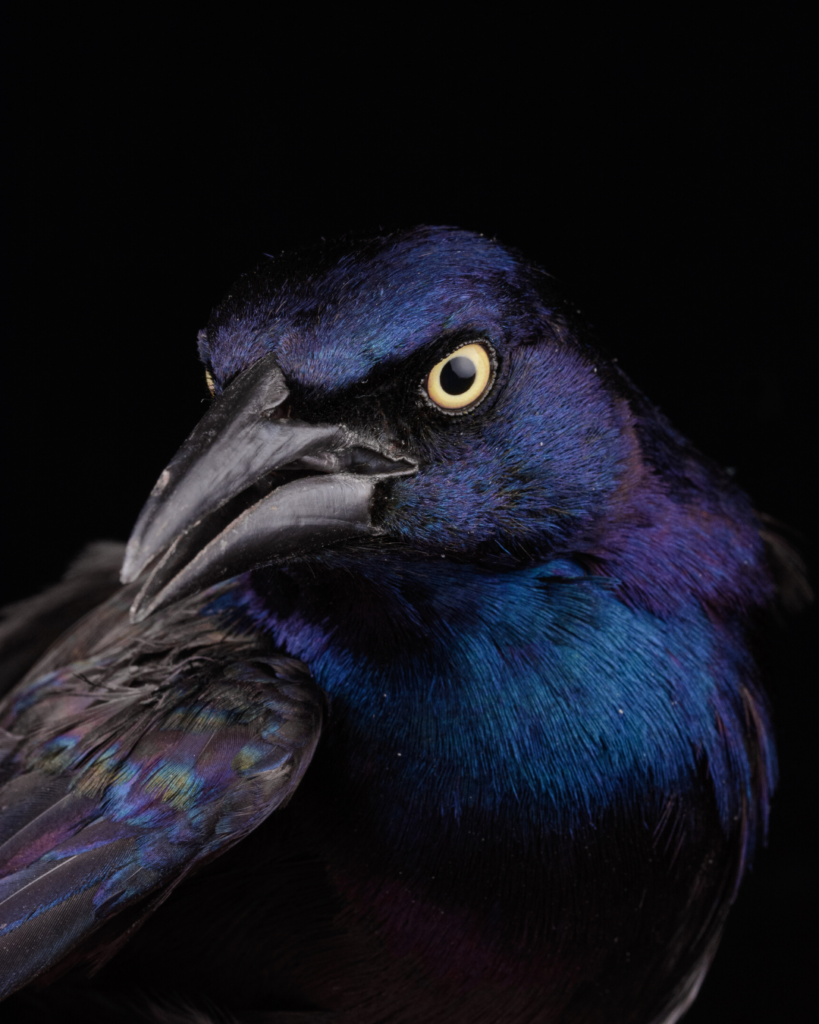
Oftentimes that last net check on the last day of the banding season produces a fun surprise. This Common Grackle was captured at the very end of this year’s banding operations in North Carolina, the first to be banded at the Arboretum since 2019, when a grackle was captured four years ago in the same net (#14). This area of the banding station is a muddy flood zone next to a stream, and so the grackles are probably coming down from the canopy to drink water and forage for invertebrates in the mud. Although a “common” bird, these grackles are truly stunning in the hand. The iridescence gives an appearance as though the grackles have been dipped in oil. A great bird with which to end the season!

